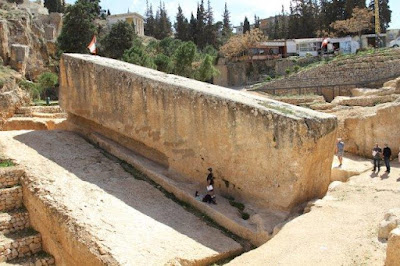In 2017, a video was released by a group of researchers and alternative historians claiming that a massive megalithic stone block in Baalbek, Lebanon was cut using an ancient laser-like technology. The block, which weighs an estimated 1,000 tons, is part of a larger structure known as the Trilithon, made up of three enormous stone blocks that have puzzled archaeologists for decades.
The Trilithon is part of the larger complex of ancient ruins at Baalbek, which has long been a source of fascination for historians and archaeologists. The site is believed to have been inhabited since at least the Bronze Age, and it was later occupied by the Romans, who built a temple complex there.
One of the most intriguing aspects of the site is the size and weight of the megalithic stone blocks used in its construction. The Trilithon, for example, consists of three stone blocks, each of which weighs an estimated 800 to 1,000 tons. These blocks were quarried from a site located several kilometers away from Baalbek and transported to the site using an unknown method.
According to the researchers who released the video, the megalithic stone blocks at Baalbek were cut using a laser-like technology that was available to ancient civilizations. They claim that the precision of the cuts on the blocks could not have been achieved with primitive tools like chisels and hammers.
The researchers point to evidence of high heat damage on the surface of the stone blocks, which they say is consistent with the use of a laser-like technology. They also note that the blocks show signs of being cut from multiple angles, which would have been difficult to achieve using primitive tools.
Despite the claims of the researchers, mainstream archaeologists and historians remain skeptical of the theory that an ancient laser-like technology was used to cut the stone blocks at Baalbek. They argue that there is no evidence of such a technology being used by ancient civilizations, and that the precision of the cuts on the blocks can be explained by skilled craftsmanship using primitive tools.
However, the mystery of the megalithic stone blocks at Baalbek continues to fascinate researchers and the public alike. As more information is uncovered about the ancient site and its construction, it is possible that we may one day have a clearer understanding of how these massive stone blocks were cut and transported.
Read more - Ancient Ruins of Baalbek: A Marvel of Engineering and Architecture




